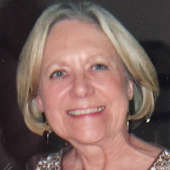- Zerilda Hays Byrne: A lady of noble lineage, Part 2 (5/25/24)
- A lady of noble lineage (4/27/24)
- Deane: Cape's premier architect of the 19th century (3/16/24)
- Louis Lorimier's death and consequences to the city, Part 2 (2/10/24)
- Pierre-Louis de Lorimier: Founder of our city, Part 1 (1/6/24)
- Kage House represents family legacy (12/2/23)
- The Haas family: Last chapter of Lacey property, Part 2 (10/28/23)
The Lail Family Saga from Kentucky to Missouri

Edward Dixon Hays was a U S Representative from Jackson. He lived his whole in Cape Girardeau County before moving to Washington DC. Born in Oak Ridge, he later became mayor of Jackson from 1903- 1907. He was elected congressman to the 66th-67th U.S Congress 1919-1923. While living in Washington, he was researching the life of Louis Lorimier in Cape Girardeau County when he found the Lail story.
Submitted
On Jan. 16, 1941 Edward D. Hays published an article in The Southeast Missourian titled, “Louis Lorimier Was Not the First White Resident in the Cape District". A popular attorney, Edward Hays was mayor of Jackson from 1903-1907. He was elected Probate Judge of Cape County 1907-1918. Later, the old 14th Missouri district elected him U. S.. Congressman to go to Washington D. C. Before the move, he lived his whole life in Cape Girardeau County.
Hays was a student of history. While researching history for his work, “Life of Louis Lorimer", Hays became engrossed in the story of the Lail family.
In my search for learning more, I’ve come upon family members’ Lail genealogy records. There are a few differences in Hays’ versions and the family stories, but basically that doesn’t take away from the facts at hand. I find them all fascinating.

Chieftain's medal found near Ruddell's fort after battle.
From the Register of the Kentucky Historical Society Vol. 54, 1956
George Lail III, who ended up in our Missouri area, came originally from Kentucky, where his great grandfather settled from North Carolina. In North Carolina the Lails’ were neighbors of Squire Boone, father of Daniel. George III’s father was George Jr.(1727-1792) and mother, Margaret (Bryant) Lail. George had five siblings.
The Lails lived at Hinkston’s Fork in Bourbon County (now Harrison).They had 351 acres near the stockade built by Capt. Isaac Ruddell to protect the settlers. Lail was a part of the garrison of men defending the fort against British Capt. Henry Byrd and Shawnee Indians who attacked the fort 1780. What insued was a massacre...men, women, and children, scalped and killed. A tragedy in Kentucky history.
George, about 10 years of age and his brother John, about 6, possibly along with other children named Ruddles, were kidnapped by the tribe. John was released and went back to the family, whereas the young boy George was kept with the tribe and raised by them in their traditions ... food, hunting, language and dress. They crossed the Ohio and Mississippi Rivers coming to the Cape Girardeau District, settling south of Jackson at a camp near Hubble Creek about 17 81.
Later in age, about 50, George met and married Louisa Wolff, daughter of a German couple in Kaskaskia. Having saved his money, being highly industrious, and a shrewd trader with the pioneers of the area, George and his wife bought 420 acres on June 4, 1830. This was land, including the house and springs, out of the Spanish land grant John Summers Sr. had received.
Because of George’s past experience with the Shawnee, he always maintained a great relationship with the natives, especially those brought in by Lorimier to the area.
George III and Louisa had seven children: Louisa, Elizabeth, Benjamin, Robert, John, Zenas and Margaret. An interesting highlight from Hays’ story is that Zenas in March of 1850 employed William Harrington to transport he and others from Independence to Suter’s Fort, California for the Gold Rush. All the children married except Louisa and John.
Both George III and his wife, Louisa, are buried in the old Summers Cemetery, two miles southwest of Jackson.
George’s will was probated February 17, 1858. From his will is the following: “To my sons, Zenas and Benjamin, I leave farm and plantation, east side of Hubble Creek, three miles south of Jackson; to Zenas the grey horse; and Benjamin the oxen and wagon. To my son, John I leave 40 acres on the west side of Hubble Creek “he selects.” Robert is to receive 40 acres on Kinder’s Creek three miles beyond Bollinger Mill, I received for military services. For my daughters, Louisa and Margaret, I leave the remaining part and residence on west side of Hubble Creek and to Elizabeth, the black 3 year old filly.”
Henry Sanford was executor of the will and Zenas Lail, administrator. T. W. English was paid $10 for making the coffin, May 18, 1857. The Cape Girardeau Eagle newspaper ran his weekly final settlement.
As an aside, Judge Hays lived in Washington D. C. until the end of his life. A native of Oak Ridge, Mo, the son of John W. and Mary Hays, died April July 24, 1941 in Bethesda, Maryland.






























Respond to this story
Posting a comment requires a subscription.